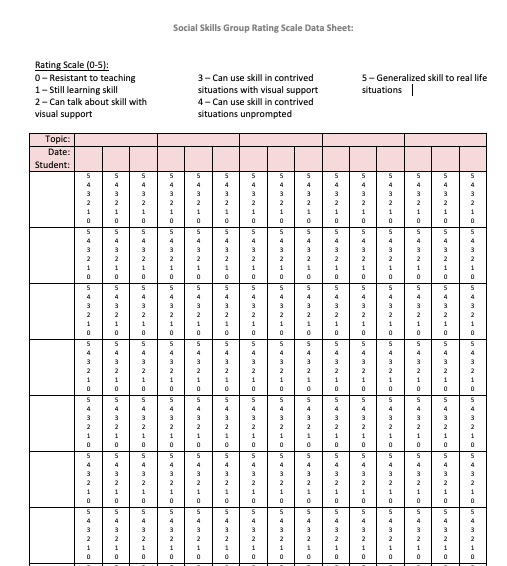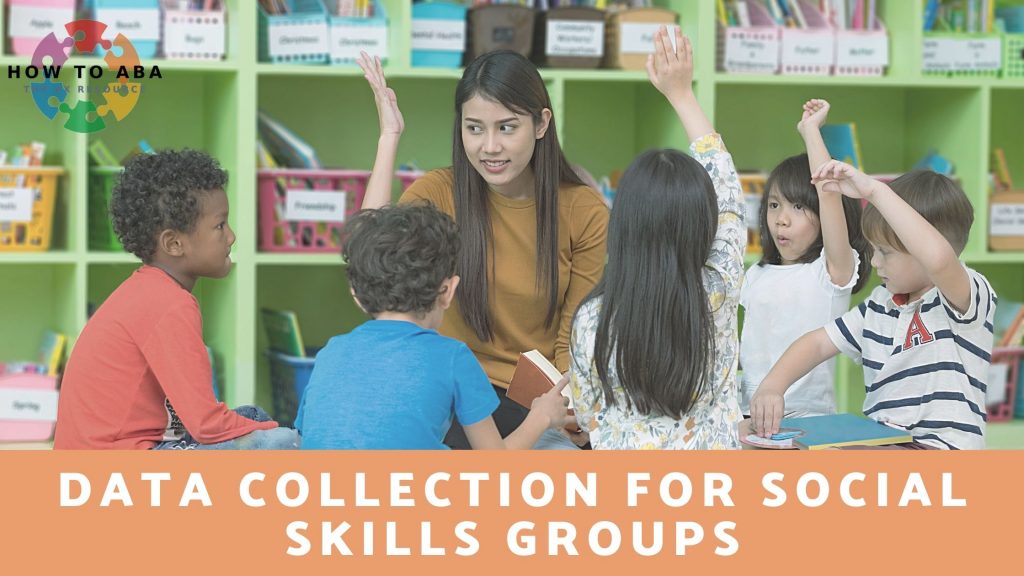
It is often our goal to get our students away from needing 1:1 support for learning to being able to learn in a group setting. When students are ready for a social skills group (check When is a Child Ready for a Social Skills Group?), it can be challenging to figure out how to put all those great 1:1 goals and progress into a group format. It can be especially daunting to think about how to collect data for a social skills group. We can become so accustomed to the DTT style learning that re-thinking data collection for groups can be difficult.
We always say that the data shouldn’t replace good teaching. The focus of any good group should focus on the teaching and interacting and the data should be able to show progress. So how can we collect meaningful data without it being too cumbersome or getting in the way of learning?
Establish the Goals for the Group
What would you like to accomplish with this group? Will it be a beginner “school-readiness” group? Or a group focused on emotional regulation? What is the age group? What are the behavioral expectations – could you accept a student who needs a higher level of behavior support? Make sure that you’re tackling goals that are appropriate for your group of students and within an appropriate amount of time.
Baseline Assessment
The simplest way to show progress over time is to do a pre-test and post-test assessment. This allows for you to spend your time with the students teaching and engaging (instead of trapped with a paper and pencil!). If you can do this assessment before the student starts the group, it would be even better because it could help with group placement and establishing if the student is a good fit.
Daily Data Collection
Don’t take on too much! Not all goals need to be accomplished in a short period of time. Establish the few goals from each lesson that you’d like to work on. Find a method of daily data collection that works for you – we like to have all the students on one page and for there to be goals organized by topic.
Rating Scale Data
We love using a rating scale format of data collection for groups because it allows you to:
a) Define the rubric that is appropriate for your goals and lesson. Sometimes the rubric can be based on level of independent, level of compliance, or level of comprehension
b) Easily collect data so that it’s not too cumbersome. When the rubric is well-defined, it allows you to circle the appropriate data point at the end of each session.
c) It graphs! If you use the rating scale data sheet like ours below, it turns into a graph over time.
Rating scale data sheets allow for more teaching and less time spent with paperwork and graphs!

Differentiate
Not all the lesson content will be applicable to all students. You could cover the same content and one student can be working on waiting their turn while another student can be working on responding to a peer. That’s ok! Think about a few goals that are relevant to each student in the group and work on those.



Pingback: When is a Child Ready for a Social Skills Group? - How to ABA
The part about getting baseline data is so important! Such a helpful way to show progress over time.